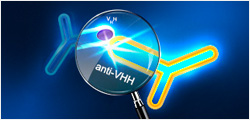| Species |
Human |
| Protein Construction |
CXCL4 (Glu32-Ser101)
Accession # P02776 |
|
| Purity |
> 95% as analyzed by SDS-PAGE
> 95% as analyzed by HPLC |
| Endotoxin Level |
< 0.2 EU/μg of protein by gel clotting method |
| Biological Activity |
ED50 < 10.0 ug/ml, measured by its ability to inhibit human FGF-basic-dependent proliferation of NR6R 3T3 mouse fibroblast cells. |
| Expression System |
HEK 293 |
| Apparent Molecular Weight |
~7.8 kDa, on SDS-PAGE under non-reducing conditions. |
| Formulation |
Lyophilized after extensive dialysis against PBS. |
| Reconstitution |
It is recommended that this vial be briefly centrifuged prior to opening to bring the contents to the bottom. Reconstitute the lyophilized powder in ddH₂O or PBS up to 100 μg/ml. |
| Storage & Stability |
Upon receiving, this product remains stable for up to 6 months at lower than -70°C. Upon reconstitution, the product should be stable for up to 1 week at 4°C or up to 3 months at -20°C. For long term storage it is recommended that a carrier protein (example 0.1% BSA) be added. Avoid repeated freeze-thaw cycles. |
| Target Background |
Platelet factor 4, also known as CXCL4, is expressed in megakaryocytes and stored in the α-granules of platelets. Recombinant human PF-4 is a 7.8 kDa protein containing 70 amino acid residues, including the four highly conserved residues present in CXC chemokines. Platelet factor 4 can be antiproliferative and antiangiogenic, at least in part via interfering with FGF2 and VEGF heparin binding and thus inhibiting their signaling. However, it can also be proinflammatory and proatherogenic through multiple effects on monocytes, macrophages and endothelial cells. |
| Synonyms |
PF4; CXCL-4; SCYB4; Platelet Factor-4; Oncostatin A; Ironplact |
����� For laboratory research use only. Direct human use, including taking orally and injection and clinical use are forbidden.

































